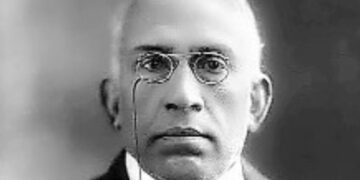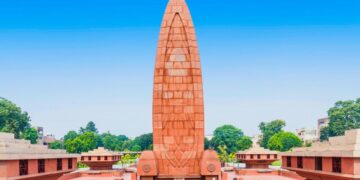1. Today, on January 26, the country is joyously celebrating its 75th Republic Day. French President Emmanuel Macron has the honor of being the chief guest at the Republic Day Parade this year, marking the sixth time a French President has held this esteemed position. The significance of celebrating Republic Day on January 26 lies in the fact that on this day in 1950, our Constitution came into force after 2 years, 11 months, and 18 days of dedicated efforts. Dr. Rajendra Prasad, the first President of India, hoisted the flag with a 21-gun salute on January 26, 1950, officially declaring Bharat a full-fledged republic. Since then, Republic Day has been commemorated annually as a national festival. Dr. Bhimrao Ambedkar, the architect of the Indian Constitution, served as the chairman of the Indian Constitution Committee, diligently working from 1946 to 1950 to draft the Constitution.
*The country is celebrating its 75th Republic Day today.
*The Constitution of India came into force on this day in 1950.
*Dr. Bhimrao Ambedkar was the creator of the Indian Constitution.
2. On January 26, 1950, the Ashoka Pillar was chosen as the national emblem. This symbol is derived from the Ashoka Pillar constructed by Maurya Emperor Ashoka in Sarnath. The Devanagari script on this emblem bears the inscription “Satyamev Jayate,” translating to “Truth always wins.” The pillar features four lions on each side, representing confidence, authority, courage, and power, although only three are directly visible. In July 2022, Prime Minister Narendra Modi unveiled the Ashoka Pillar, the national symbol, atop the new Parliament House.
*On this day the Ashoka Pillar was adopted as the national symbol.
*On this sign “Satyamev Jayate” is written in Devanagari script.
3. January 26, 1963, witnessed the declaration of the peacock as India’s national bird. Known scientifically as ‘Pavo cristatus’ and in English simply as ‘Peacock,’ the bird is referred to as ‘Mayur’ in Sanskrit. The decision to declare the peacock as the national bird involved careful consideration. In 1961, the Indian Wildlife Board convened to discuss the matter, emphasizing that the chosen bird should be prevalent across the country and deeply rooted in Bharatiya culture and tradition. The peacock, also known as ‘Murugan,’ serves as the vehicle of Kartikeya, and a peacock feather is prominently featured in the crown of Lord Krishna.
*On this day the peacock became the national bird of the country.
*The decision was taken after careful consideration
*Peacock is also known as ‘Murugan’, the vehicle of Kartikeya.
4. January 26, 2001, marks a somber note in history as Gujarat was struck by a powerful earthquake, claiming the lives of thousands. The city of Bhuj bore the brunt of the devastation. Registering between 6.9 to 7.9 on the Richter scale, the earthquake had widespread effects, reaching Pakistan, Bangladesh, Nepal, and even South India. The disaster resulted in the loss of thousands of lives, with many buried under the debris of buildings, including over 400 children in a school in Bhuj.
*A strong earthquake occurred in Gujarat today itself.
*The intensity was between 6.9 to 7.9 on the Richter scale.
















Comments